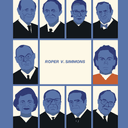
Thirty years ago, filmmaker Errol Morris, who directed the documentary “The Thin Blue Line,” helped to exonerate Texas death-row prisoner Dale Adams, falsely accused of murdering a police officer. During the course of making the film, Morris met the notorious Texas prosecution psychiatrist, Dr. James Grigson, who routinely testified that capital defendants — including the innocent Mr. Adams — posed a risk of future dangerousness.
Morris recently interviewed Christina Swarns (pictured, center), litigation director for the NAACP Legal Defense and Education Fund, about the case of Duane Buck and the hazards of Texas’s continued use of the concept of future dangerousness in sentencing defendants to death. Swarns argued Buck v. Davis in the U.S. Supreme Court, a case tainted by the testimony of Dr. Walter Quijano, a psychologist who told the jury that Buck was more likely to commit future crimes because he was black.
On February 22, 2017, the Supreme Court overturned Buck’s death sentence, saying “Our law punishes people for what they do, not who they are.” Swarns said “[t]he introduction of evidence linking race to dangerousness — like that which was presented in the Duane Buck case — was an inevitable product of future dangerousness in the capital punishment system in Texas.” With a death penalty system already “contaminated and corrupted by racial bias,” she said, Duane Buck’s death sentence “was a predictable outcome of that mess.”
Swarns called the future dangerousness requirement “insane,” saying “The business of predicting future dangerousness without becoming corrupted by the various factors that are so tied to human functioning is impossible. It’s an absurd requirement.” She added that Buck’s perfect disciplinary record in his more than 20 years in prison is evidence that predictions of future dangerousness are unreliable.
On August 19, the Texas Court of Criminal Appeals granted Jeffery Wood a stay of execution to litigate his claim that the testimony Dr. Grigson presented in his case claiming that Wood was certain to pose a future danger to society if he was not executed was false and scientifically baseless. While the Supreme Court did not address the issue of future dangerousness determinations in its Buck decision, Chief Justice Roberts, writing for the majority, sharply condemned the racially biased testimony from Buck’s trial. “When a jury hears expert testimony that expressly makes a defendant’s race directly pertinent on the question of life or death, the impact of that evidence cannot be measured simply by how much air time it received at trial or how many pages it occupies in the record. Some toxins can be deadly in small doses,” Roberts wrote.
E. Morris, Who Is Dangerous, and Who Dies?, The New York Times, June 7, 2017.
Note — at the time of publication, Christina Swarns was a member of DPIC’s Board of Directors.



